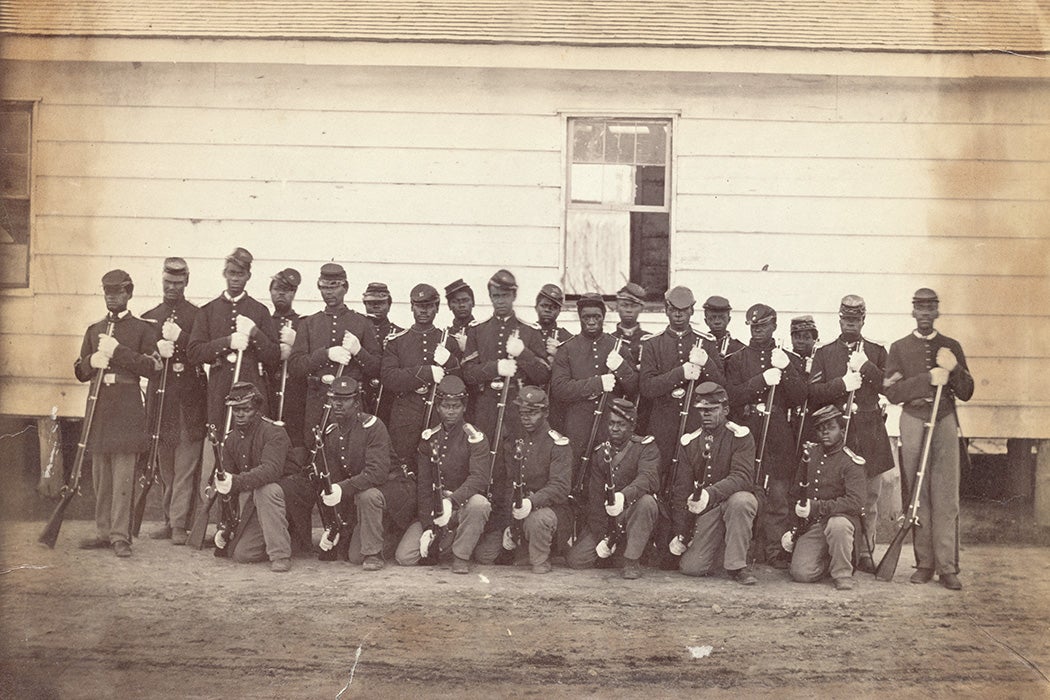Woefully inadequate medical facilities during the early years of the Civil War resulted in the formation of the United States Sanitary Commission. The civilian organization, funded by donations from Northern women’s aid societies, helped improve battlefield medicine and recuperative care. The Commission especially advanced the ideas and practices of public health, hygiene, and sanitation.
As most of the war’s casualties and deaths were from diseases rather than weapons, the Commission’s work has been much credited over the years. Post-war medicine was better as a result—at least for some people.
For, as historian Leslie A. Schwalm documents, the Commission’s white male leadership didn’t want the organization’s legacy to be as a “mere relief association.” Instead, they touted their work for the advancement of racist science that “rationalized, naturalized, and justified racial hierarchies.” According to Commission President Henry W. Bellows, the organization’s “truly scientific work” was what Schwalm describes as a “large-scale endeavor to identify and catalog anatomical and physiological evidence of racial inferiority.”
The Commission’s Secretary, Frederick Law Olmsted, was also committed to what he called “scientific inquiry” into the “mental and moral peculiarities” of the “negro class of the South.” The white women who were the backbone of the organization did their part by largely excluding Black women from participation at the grassroots and completely excluding them from leadership positions.
“As case studies and as quantifiable populations,” writes Schwalm,
African Americans in good and ill health were subjected to investigation, measurement, and speculation; their severed limbs, tumors, bones, blood and tissue were photographed, sketched, and taken as specimens; their cadavers autopsied, their skulls cleaned and collected, their brains weighed.
So, just as slavery was being dismantled, anti-Black racism was being made even stronger with the armature of medicine and science. “An increasingly intransigent racial essentialism” founded on the exploitation of Black bodies (living and dead) laid the foundations for the racist biology that boomed during the Gilded Age and the Progressive Era.
During the war, inferior or non-existent health care resulted in a health crisis for hundreds of thousands of Black soldiers and escapees from slavery. Schwalm describes a “wartime path to freedom” that “forced former slaves through a gauntlet of epidemic disease, exposure, starvation, and brutal exploitation.” The disaster presented military and civilian doctors and other researchers with many subjects for their ideological project. Neither Emancipation nor Confederate defeat freed the now-free “from the efforts of northern white scientists, researchers, and other self-regarded ‘learned men’ to reveal, catalog, analyze, and address the implications of the ‘physical character of the negro race.’”
It wasn’t just the Sanitary Commission, even though it played a “particularly important role in applying medical and scientific empiricism to the meaning of race.” The Smithsonian Institute, the Freedmen’s Inquiry Commission, the Army Medical Museum, the Surgeon General, the Provost Marshal, and the Army Medical Department added to the data. “Scientists, physicians, sanitarians, sociologists, statisticians, and naturalists” took part.
There were, for example, fifty-five distinct measurements of US Colored Troop recruits recorded on the Commission’s Form EE, using devices—andrometers, spirometers, dynamometers—often innovated for the tasks at hand. The avowed point was to “document the belief that people of African descent constituted an indisputably inferior race with physiological and moral peculiarities that could be revealed using the modern and modernizing techniques of medical science.”
Weekly Newsletter
The resulting agenda-fitting statistics circulated widely. The voluminous publications of the Commission would be cited for many decades. Researchers, meanwhile,“gained professional authority and recognition for their skill and acumen at identifying, measuring, collecting, and displaying the characteristics of [B]lackness.” Schwalm calls this a “northern analog to the professional expertise southerners involved in the slave trade believed they demonstrated in the slave pens.”
“The promotion of racial knowledge was neither a southern nor exclusively a pro-slavery enterprise,” concludes Schwalm as she details “race-making” in action. The results would reverberate for generations, not least in health disparities: “racial exclusion and segregation continued to shape the infrastructure of medical education, practice, and research” all through the long years of legal segregation and beyond.







